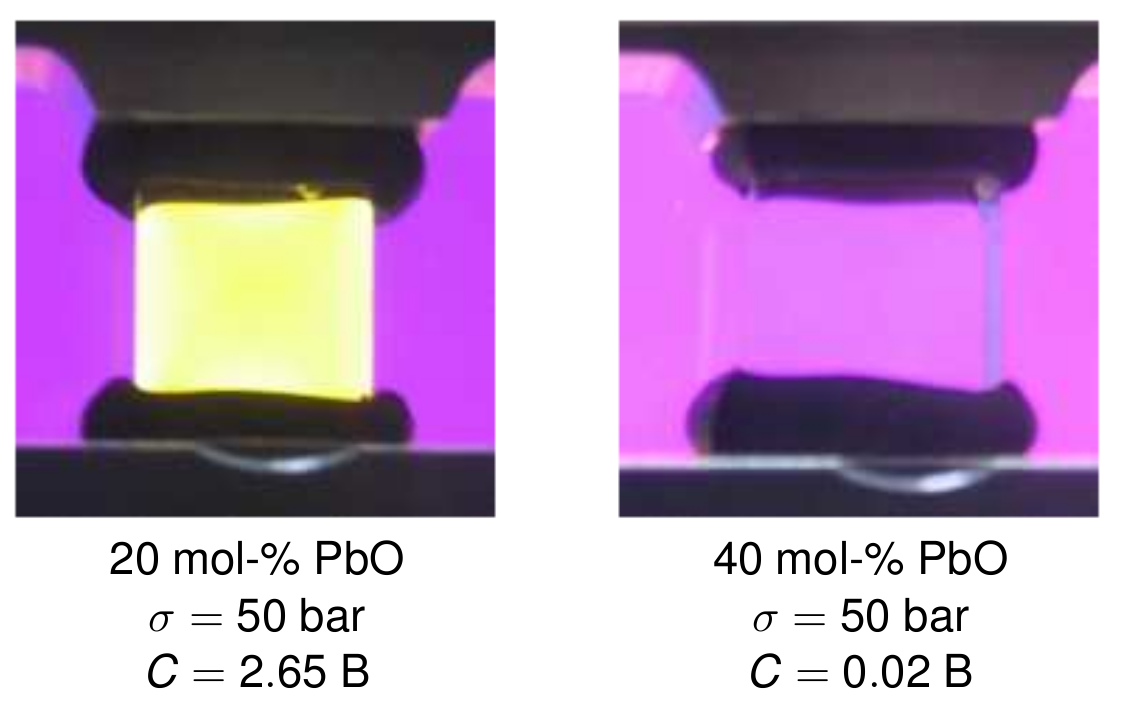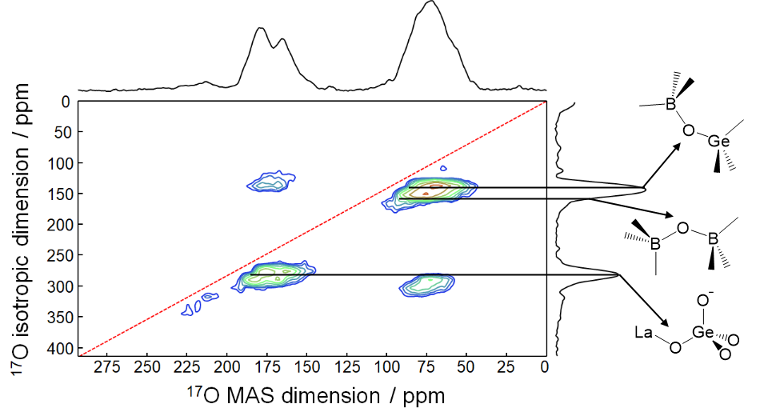The Zwanziger Lab

Investigating materials chemistry and physics in glassy materials, using a mix of experiment and theory.
Research themes
Chemistry/Mechanics/Light Interaction in Glass

We work intensively on the effect of chemistry on the optical and mechanical response of glass. The left picture above shows a block of glass under stress, viewed through crossed polarizers–the residual colour indicates that the glass has become birefringent. The right picture shows the same set up but with glass enriched in lead oxide–the absence of colour shows that the glass has retained its isotropic character, even in an anisotropic environment.
Structural Studies of Glass

We use various techniques, mainly solid state NMR, to investigate the structure of glasses. The figure shows oxygen-17 NMR, which we used to study glass ceramics based on LaBGeO5.
Theory and Modelling

We develop theory and code to compute observables we measure in the lab, particularly for NMR. The picture above shows the chemical shielding tensor (brown, on tellurium) and electric field gradient tensor (blue, on oxygen) in TeO2, computed with implementations we have made in the Abinit code.